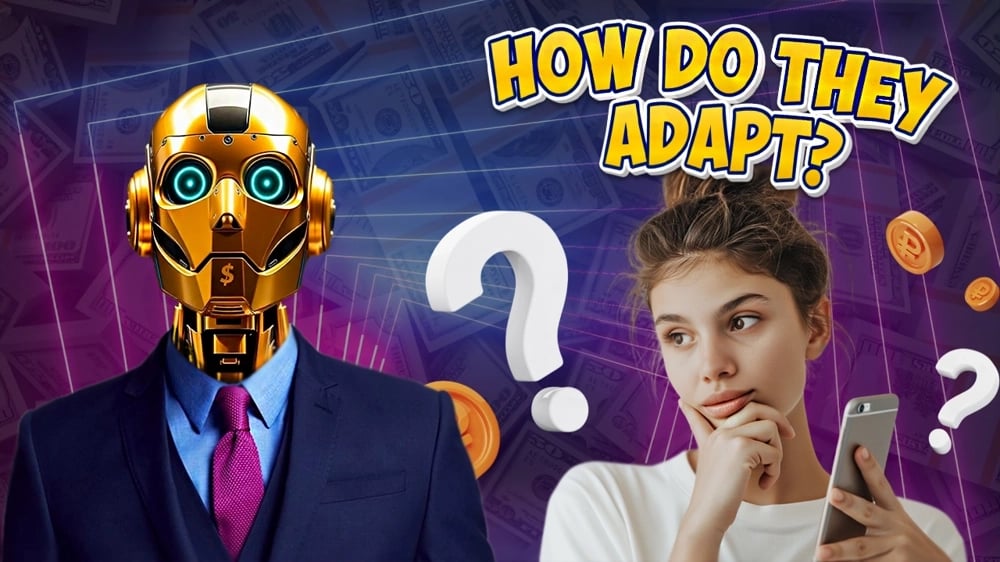How Trading Robots Adapt to Changing Market Conditions 🤖📉📈
Algorithmic trading is no longer the domain of hedge funds and institutions. Today, trading robots are used by both beginners and professionals. But the market is a dynamic environment: trends shift to sideways movement, volatility rises and falls, and the behavior of major players changes. To remain profitable, a robot must be able to adapt to changing market conditions.
In this article, we’ll explore how modern trading robots adjust to the market, the technologies behind them, and what traders should consider when working with adaptive algorithms.
What Does “Adaptation” Mean for a Trading Bot?
Adaptation is the robot’s ability to:
detect changes in market conditions 📊;
automatically adjust its parameters 🔧;
modify its trading behavior based on context 🧠.
A simple example: if a robot trades breakouts, it should be able to “realize” that the market is currently range-bound and either switch to a conservative approach or stay out of trades.

What Market Conditions Require Adaptation?
Here are a few market factors that demand adaptation:
Volatility Shifts: Higher volatility increases risk and opportunity; low volatility requires more selective trading.
Market Phase Changes: Trend → Range → Reversal.
Participant Behavior: High-frequency trading, scalping bots, and market makers can cause false breakouts or sharp spikes.
Fundamental Events: News, economic data, and political events can rapidly shift market dynamics.
How Do Trading Robots Adapt?
Periodic Optimization (Re-optimization) 🛠️
The robot recalculates its parameters at set intervals. For example, every two weeks it re-optimizes its indicators based on recent data. It’s a simple but effective way to stay relevant.
Volatility-Based Adjustments 📉📊
Many bots use ATR, standard deviation, or volatility indexes (e.g., VIX) to adjust stop-losses, take-profits, or signal sensitivity.
Example: If volatility spikes, the robot widens stop levels to avoid getting stopped out on noise.
Multi-Strategy Architecture 🧩
A bot may include trend-following, counter-trend, and range-trading modules. It identifies the current market regime and switches to the most suitable strategy. This boosts performance stability.
Machine Learning & Neural Networks 🤖🧠
Advanced systems use ML to analyze thousands of variables and detect patterns invisible to humans. These bots don’t just follow rules — they learn how to respond to new market conditions.
Popular algorithms: Random Forest, XGBoost, LSTM (for time series), Reinforcement Learning.
Self-Learning Models (Online Learning) 🔁
Some bots adapt in real time, learning from each trade and adjusting behavior accordingly.

What Data Do Adaptive Robots Use?
To "understand" the market, adaptive bots rely on diverse data types:
Tick Data and Volume
OHLC Candlestick Data
News & Sentiment Analysis
Macroeconomic Reports
Risks and Limitations of Adaptive Systems ⚠️
Even adaptive bots aren’t perfect. Be aware of these risks:
Overfitting — bots may become too optimized for past data, losing edge in real-time markets.
Delayed Response — sophisticated bots might react too slowly to sharp moves.
Complex Debugging & Testing — especially with ML systems.
Unpredictable Behavior — self-learning bots might “learn” risky tactics over time.
The Trader’s Role in Adaptive Trading 🧑💻
Despite automation, human input remains vital. The trader must:
Monitor data feeds and algorithm stability 🧮
Periodically review performance and logs 🧾
Intervene in extreme market conditions 🔌
Adjust strategy architecture when market dynamics shift 🌪️

Conclusion 🚀
Modern trading bots are no longer rigid rule-followers — they are intelligent systems that adapt to real-world markets. They account for volatility, adjust their parameters, and in some cases, learn from experience.
But behind every successful bot should be a knowledgeable trader who understands how the robot works, what drives its decisions, and where its limits lie.
Only the fusion of human expertise and technological flexibility can deliver consistent results in today’s fast-moving financial landscape 📉📊📈.















Comments
It's fascinating how algorithmic trading has democratized access to the markets, but adaptability will be key for success in this ever-changing landscape.